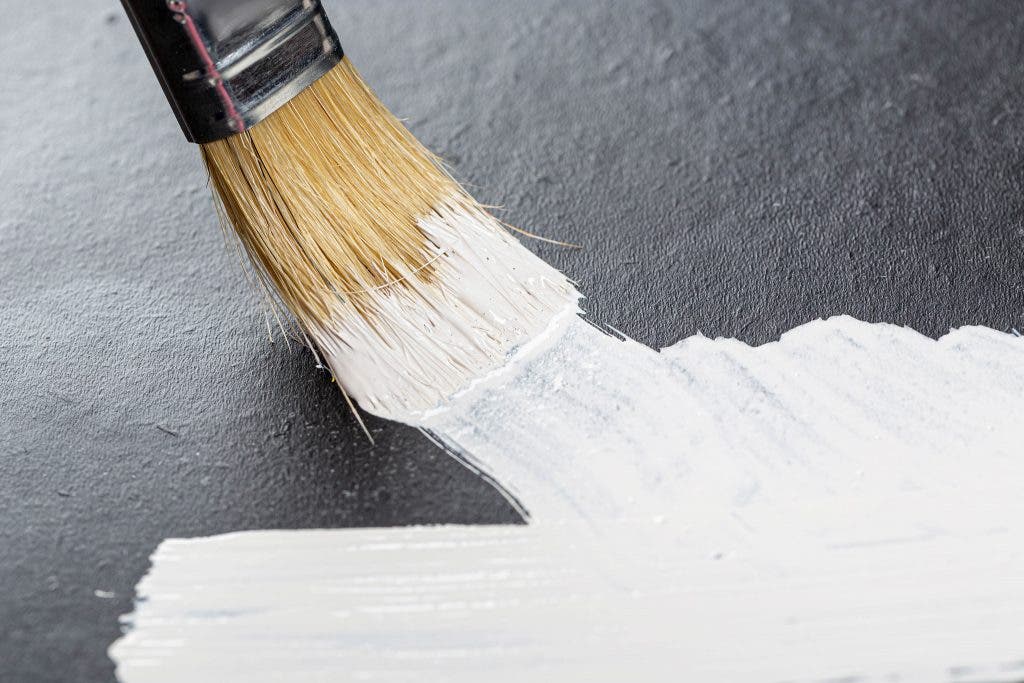What if paint could cool off a building enough to not need air conditioning? A group of US researchers has produced just that: the whitest ever paint. It cooled surfaces by 4.5ºC below the ambient temperature and reflected 98% of sunlight.

Cooling represents a significant sector of energy consumption in both residential and commercial applications. This is set to become a growing problem as the climate heats up more and more, as more people buy air conditioning equipment to cope with rising temperatures. Urban areas are especially problematic: cities act as “hot islands” as vegetation is replaced with concrete and asphalt, infrastructure that’s darker and absorbs more heat.
White-painted roofs have long been considered a solution to cool buildings. They are currently used all around the world, from New York to India — but there’s a problem. The reflective white paints currently on the market only reflects 80-90% of sunlight and absorb UV light. This means that oftentimes, they can’t cool surfaces below ambient temperature.
Last year, researchers from Purdue University in the United States created an ultra-white paint that pushed limits on how white paint can be. But now they have outdone their work, creating a newer paint that isn’t just whiter but can also keep surfaces cooler than the formulation that the researchers had previously demonstrated.
“If you were to use this paint to cover a roof area of about 1,000 square feet, we estimate that you could get a cooling power of 10 kilowatts. That’s more powerful than the central air conditioners used by most houses,” Xiulin Ruan, a Purdue professor of mechanical engineering, said in a statement.
The researchers argue this new white is probably the closest equivalent of the blackest black, known as “Vantablack,” which absorbs up to 99.9% of visible light. The paint formulation reflects up to 98.1% of sunlight – compared with the 95.5% of the white they developed in 2020 – and sends infrared heat away from the surface as well.
The new paint was revealed in a paper in the journal ACS Applied Materials & Interfaces, in which the researchers explained the reasons behind the paint’s cooling performance. They used barium sulphate as the pigment at a 60% concentration, which, unlike conventional titanium dioxide pigment, doesn’t absorb UV light.
At the same time, the researchers used another trick: pigment particles of different sizes. The amount of light dispersed by a particle depends on its size, so using a range distributes more of the light spectrum from the sun. The team tried out over 100 different materials and tested around 50 formulations for each of the most promising.
“We looked at various commercial products, basically anything that’s white,” Xiangyu Li, a postdoctoral researcher at MIT, who worked on this project as a Purdue Ph.D. student, said in a statement. “We found that using barium sulfate, you can theoretically make things really, really reflective, which means that they’re really, really white.”
The new paint is the result of six years of research, building on attempts going back to the 1970s to develop radiative cooling paint. As it uses a standard acrylic solvent, the paint could be manufactured like any other, the researchers argued. It would also be similar in price, they argued, as barium sulphate is actually cheaper than titanium dioxide.
The university and the research team have already filed a patent for the paint and are now working with large companies towards commercialization. They believe that the paint will be widely available in the market in one or two years. This could help address cooling’s growing emissions and at the same time bring down the heat in big cities.


